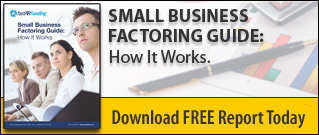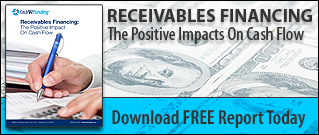American small business owners have been cautiously optimistic in recent months, as reports of increased consumer spending have become more consistent and reliable. Fourth quarter stock market gains helped many ring in the New Year with high expectations for a rapid economic recovery in 2011. However, a Bloomberg Businessweek article released January 27, 2011 indicates that small business owners may still have a long road ahead of them as the economy continues its upward trek.
With invoice factoring services, small business lending is fast and generates no debt, actually appearing as an asset for a company’s ledger, as opposed to small business loans, which are liabilities. As well, with invoice factoring, entrepreneurs see the ability to budget and plan more effectively while spending less time managing their accounts receivable. Finally, because invoice factoring approvals are based on the customers’ creditworthiness and invoices’ values (not the business owner’s personal credit or assets), invoice factoring services are an affordable, accessible method of small business financing, ideal for today’s economy.
Still, American businesses need operating capital. And with consumers and businesses working to save every penny, many vendors are truly feeling the pinch as customers wait a full 30 or 60 days to remit payment on their invoices. This is where invoice factoring can be of great benefit to small businesses.
For small business owners functioning in this changing economy, finding new ways to obtain small business financing while remaining fiscally conservative is not just good business, it’s a necessity. Although interest rates remain at record lows to bolster lending, many entrepreneurs find that their credit has been damaged by the recession, making them ineligible for small business loans. Others fear taking on the debt of a small business loan, hoping to improve their company’s credit by maintaining a healthy balance sheet.
What this boils down to for small business owners is simple: The wealthy are seeing the fastest, most appreciable recovery as the stock market rallies, while the vast majority of Americans continue to struggle to make ends meet as economic stability slowly trickles down. This disparity is particularly relevant to small business owners, as the majority of Americans continue to spend cautiously. As well, the longer the recession’s effects are felt throughout the country, the greater the impact on overall consumer spending habits, meaning that many will continue to do without items once considered essential even after they regain financial stability.
While Businessweek acknowledges the gains seen in consumer spending during the fourth quarter of 2010, it notes a large discrepancy between spending by the wealthy and spending by the average American family. In fact, it notes that top economists estimate between 40 and 50% of current consumer spending is done by income earners in the top 20 percent. That spending accounts for nearly 70% of the American economy.








